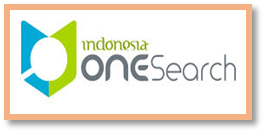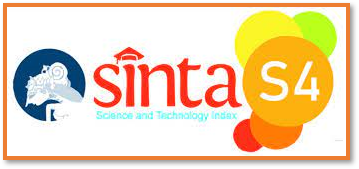The Influence of Breastfeeding On Nutritional Status, and the Frequency of Children Experience Tropical Diseases during the Covid 19 Pandemic in Samarinda
Abstract
Warm temperatures, humidity, and high rainfall are factors in the high incidence of infectious diseases in the tropics. This condition is certainly risky for children's health. COVID-19 pandemic also adds to the risk of endangering the health of children in the golden period. In the golden period, infants and toddlers need adequate nutritional intake. Many factors hinder the provision of nutrition (ASI), one of which is the COVID 19 pandemic. Inadequate nutritional intake can lead to suboptimal growth and development of children, decreased immunity. The purpose of this study was to determine the effect of breastfeeding on nutritional status, and the frequency of children experiencing tropical diseases during the COVID 19 pandemic. Methods: Quantitative study with a categorical analytic research design. with a cross-sectional analytic approach. The sampling technique used a purposive sampling technique and the data collection tool was a questionnaire to measure the frequency of illness. Nutritional status measurement used anthropometric assessment. Conclusion: there is a significant relationship between breastfeeding and nutritional status and the frequency of illness in children. Recomedations:Therefore it is Important to campaign more intensively on the importance of breastfeeding for children's nutritional adequacy.
Full Text:
PDFReferences
WHO. Peringatan Hari Penyakit Tropis Terabaikan Sedunia, Perdana di Indonesia. 2023 https://www.who.int/indonesia/id/news/detail/16-03-2023-the-first-commemoration-of-world-neglected-tropical-diseases-day-in-indonesia
Kementerian Kesehatan RI. Buku saku pemantauan status gizi. Buku Saku Pemantauan Status Gizi Tahun 2017, 2018; 7-11.
Upadhyay R, Chinnakali P, Bhilwar M, Krishnan B, Kulkarni V, Gupta A, & Rizwan S. Prevalence of malnutrition, acute respiratory infections and diarrhoea in children aged 1-5 years in urban slums of Puducherry, South India. International Journal of Contemporary Pediatrics, 2015; 2(1): 37. https://doi.org/10.5455/2349-3291.ijcp20150209
Badan Pusat Statistik Provinsi Kalimantan Timur. Kalimantan Timur Dalam Angka. BPS Provinsi Kalimantan Timur. 2019. ISSN : 0215-2266
Lubbe W, Botha E, Niela-Vilen H, & Reimers P. Breastfeeding during the COVID-19 pandemic – a literature review for clinical Practice. International Breastfeeding Journal, 2020 15(82), 1-9. https://doi.org/10.1186/s13006-020-00319-3
Badan Pusat Statistik. Persentase Bayi Usia Kurang Dari 6 Bulan Yang Mendapatkan Asi Eksklusif Menurut Provinsi (Persen), 2019-2021. 2021. Diunduh pada tanggal 11 April 2022 dari https://www.bps.go.id/indicator/30/1340/1/persentase-bayi-usia-kurang-dari-6-bulan-yang-mendapatkan-asi-eksklusif-menurut-provinsi.html
Masluhiya S, & Irma I. Sindrom Penyakit Tropis sebagai Prediktor Terjadinya Malnutrisi Balita di Daerah Pesisir. Ghidza: Jurnal Gizi Dan Kesehatan, 2020; 4(2), 107-119. https://doi.org/10.22487/ghidza.v4i2.128
Kementerian Kesehatan RI. Data Informasi Profil Kesehatan Indonesia Tahun 2018. 2018
Kementerian Kesehatan Republik Indonesia. Buku Saku Hasil Studi Status Gizi Indonesia (SSGI) Tahun 2021. Badan Litbangkes Kemenkes RI. 2021. Diunduh pada tanggal 11 April 2022 dari https://www.litbang.kemkes.go.id/buku-saku-hasil-studi-status-gizi-indonesia-ssgi-tahun-2021/
Kementerian Kesehatan Republik Indonesia. Profil Kesehatan Indonesia 2016. Jakarta. Pusat Data dan Informasi Kementerian Kesehatan Republik Indonesia. (2017).
Rizkianti R, Prasodjo R, Novianti, & Saptarini I. Analisis faktor keberhasilan praktik pemberian ASI eksklusif di tempat kerja pada buruh industri tekstil di Jakarta. Teknologi OIntervensi Kesehatan Masyarakat Badan Litbangkes Kemenkes RI. Bul. Penelitian Kesehatan, 2014; 42 (4): 237-248.
Sattari M, Levine D, Neal D, & Serwint, J. (2013). Wok-place predictors of duration of breatfeeding among female physicians. Journal Pediatric, 2013; 163 (6): 1612-7. Doi: 10.1016/j.jpeds.2013.07.026.
Fatmawati S., Rosidi A, & Handarsari, E. Perbedaan pemberi air susu ibu eksklusif dan susu formula terhadap kejadian konstifasi pada bayi usia 6-12 bulan di wilayah kerja Puskesmas Kedung mundu Kota Semarang. Jurnal Gizi, 2026. http://jurnal.unimus.ac.id/index.php/jgizi/article/view/1944/1984.
Kitano N, Nomura K, Kido M, Murakami K, Ohkubo T, & Sugioto M. Combined effects of maternal age and parity on successful initiation of exclusive breastfeeding. Prev Med Ref, 2016; (3):121-126. Doi: 10.1016/j.pmeds.2015.12.010.
Depkes RI. Pedoman Pemberantasan Penyakit ISPA Untuk Penanggulangan Pneumonia Pada Balita. 2004.
Hurlock, Elizabeth B. Psikologi Perkembangan : Suatu Pendekatan Sepanjang Rentang Kehidupan. Jakarta : Erlangga. 2011.
Sahitarani AS, Paramashanti BS, & Sulistyawati. Relationship between stunting with frequency and duration of infection disease in children age 24-59 monts. Indonesian Journal of Nutrition and Dietetics, 2017; 5 (2): 47-53. DOI : http://dx.doi.org/10.21927/ijnd.2017.5(3S2).47-53
Nur A, & Marisa N. Breastfeeding history with infectious disease in toddler. Jurnal Kesehatan Masyarakat Nasional, 2014; 9 (2): 144-149. DOI: 10.21109/kesmas.v9i2.510
Abdou SM, Awady MY, Ezz NFA, & Boulos DNK. Frequency and characterisics of common infectious disease among children under 5 years old presenting at Giza Family Health Center during 2013. The Egyptian Journal of Community Medicine, 2016; 35(2). http://ejcm.journals.ekb.eg/article_3568_624c4298653ed931121026195fcbae88.pdf
Kementerian Kesehatan Republik Indonesia. Profil kesehatan Indonesia 2014: Situasi dan Analisis ASI Eksklusif. Jakarta : Pusat data dan Informasi Kementrian Kesehatan Republik Indonesia. 2014.
Septiani H, Budi A, & Karbito. Faktor-faktor yang berhubungan dengan pemberian ASI eksklusif oleh ibu menyusui yang bekerja sebagai tenaga Kesehatan. Jurnal Ilmu Kesehatan, 2017; 2 (2).
Zolanda, A., Raharjo, M., & Setiani, O. Faktor risiko kejadian infeksi saluran pernafasan akut pada balita di Indonesia. Jurnal Link, 2021; 17(1): 73-80. http://ejournal.poltekkes-smg.ac.id/ojs/index.php/link
UNICEF. Nutrition: Breastfeeding. 2015. Diunduh tanggal 4 April 2022 dari https://www.unicef.org/nutrition/index_24824.html
Widiastuti IAKS, Waluyanti FT, & Wanda D. The practice of exclusive breastfeeding can reduce frequency of sick children and improve the productivity of health-care provider mothers: study in Samarinda, Indonesia, Comprehensive Child and Adolescent Nursing, 2019; 42:sup1, 300-312, DOI:10.1080/24694193.2019.1594463
WHO. Global Strategy for infant and young child feeding. 2003. Diunduh tanggal 12 Maret 2022 dari http://www.who.int/nutrition/publications/gs_infant_feeding_text_eng.pdf
Hikmahrachim, H.G., Rinawati Rohsiswatmo, R., & Ronoatmodjo, S. Efek ASI Eksklusif terhadap Stunting pada Anak Usia 6-59 bulan di Kabupaten Bogor tahun 2019. Jurnal Epidemiologi Kesehatan Indonesia, 2019, 2(3): 78-82
Vandenplas Y HB, Basrowi RW. Breastfeeding is best. But what after breastfeeding? W Nutr J. 2018.
DOI: http://dx.doi.org/10.30872/j.kes.pasmi.kal.v6i1.10852
Refbacks
- There are currently no refbacks.
Indexing by :










